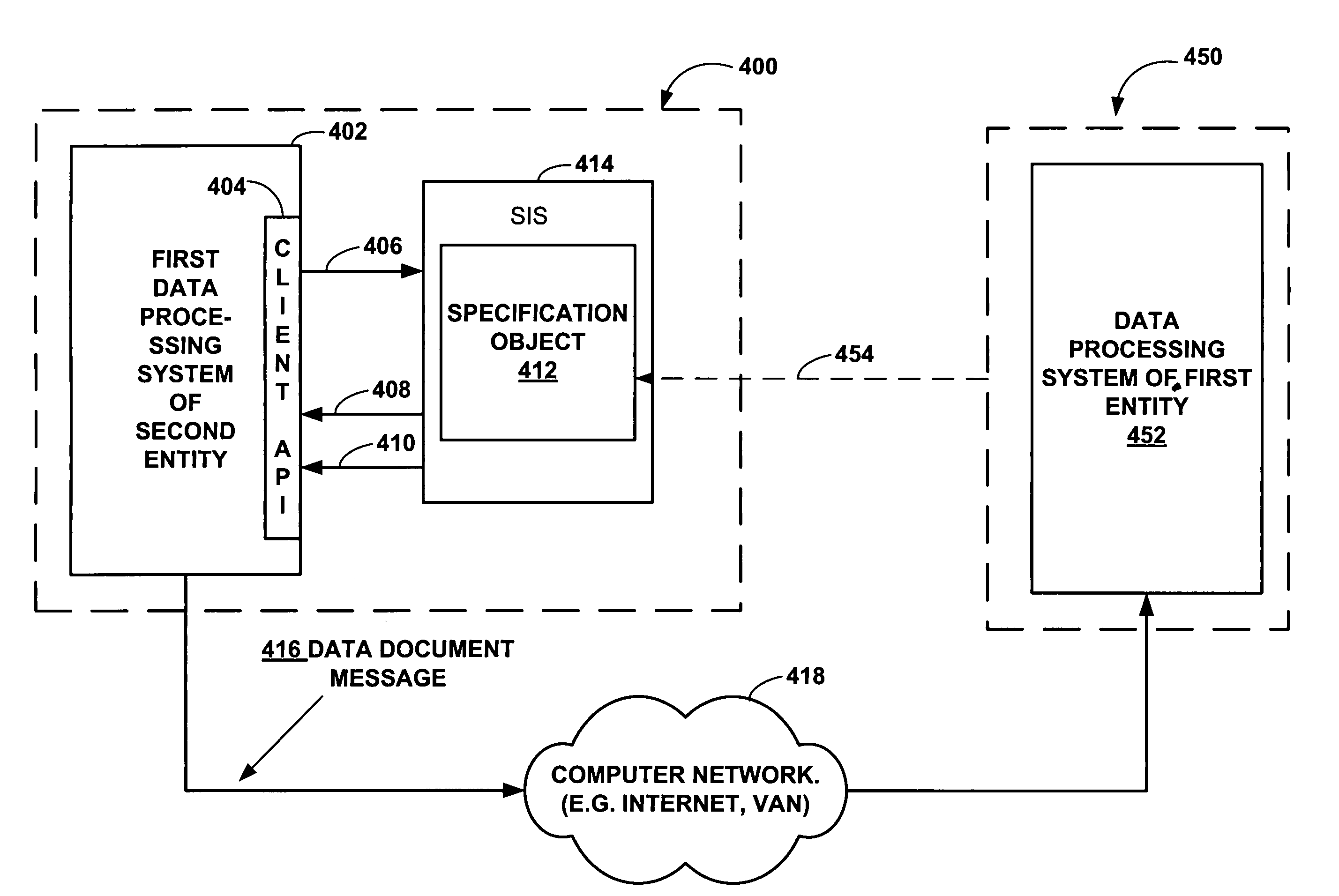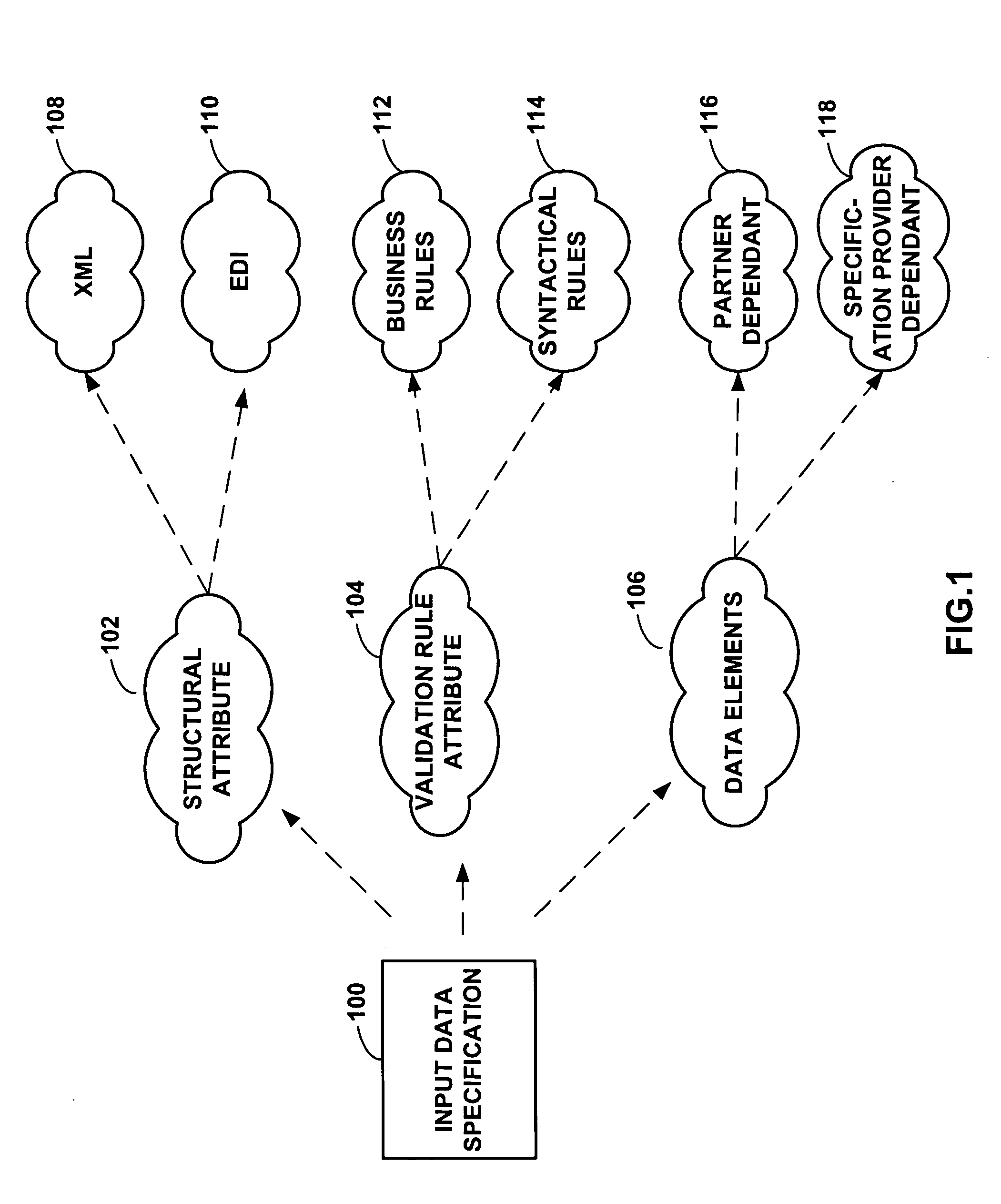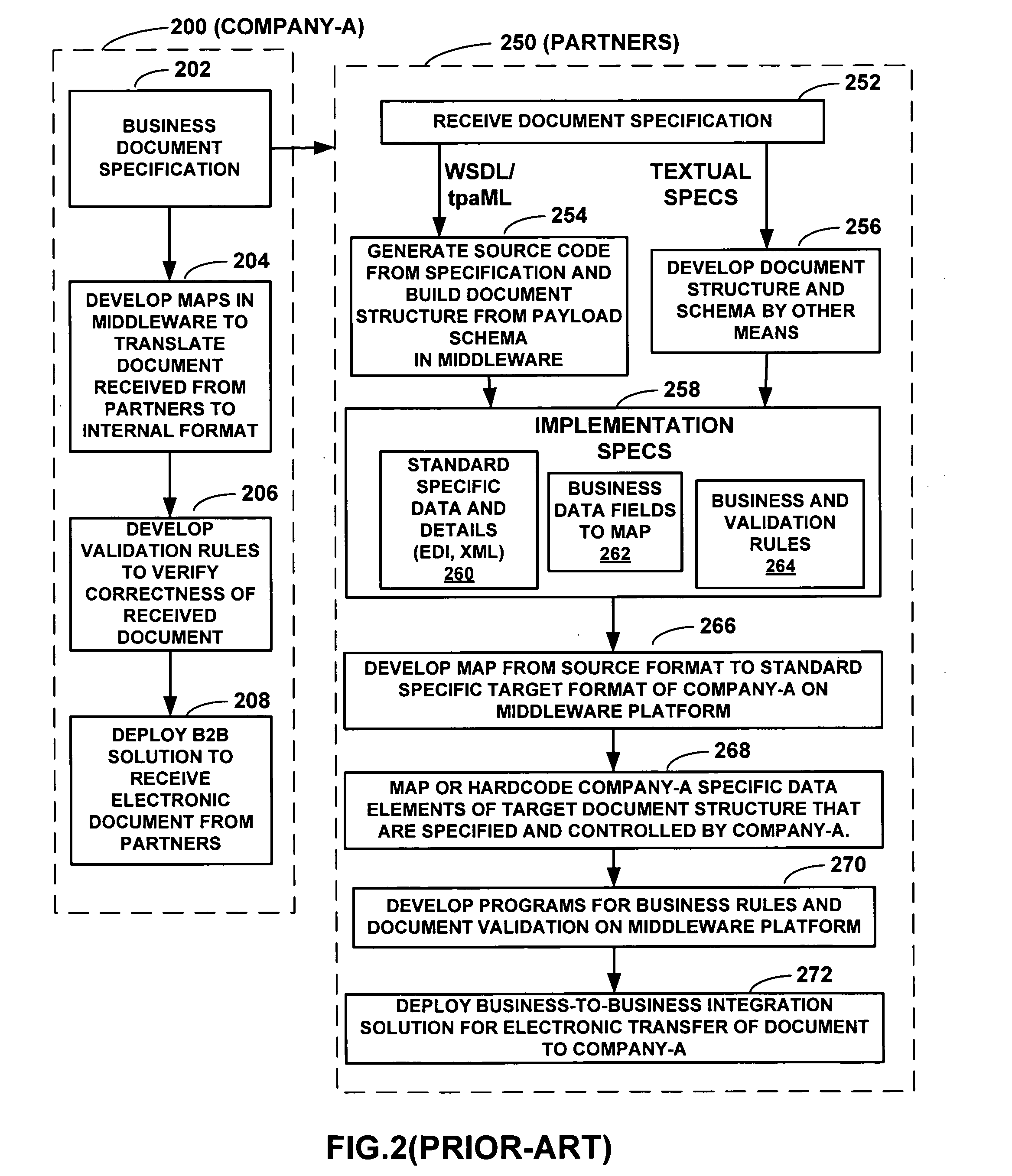Input data specification method and system in business-to-business integration
a business-to-business integration and input data technology, applied in the field of computerized business-to-business integration and enterprise application integration, can solve the problems of complex nature of business documents such as invoices or purchases orders, many b2b and eai projects are costly to build and maintain, and both business entities suffer financial losses
- Summary
- Abstract
- Description
- Claims
- Application Information
AI Technical Summary
Benefits of technology
Problems solved by technology
Method used
Image
Examples
Embodiment Construction
[0054] In order to quickly understand the overview of the current invention, reference is now made to FIG. 4, which depicts a block diagram of using specification object 412 to electronically transfer a data document (business document) message 416 or input data 416 from company 400 or second entity 400 to company 450 or first entity 450 over a computer network 418.
[0055] Specification object 412 corresponding to data document message 416 is created and maintained by the first entity 450 and is supplied to the second entity 400 in a computer readable media or downloaded by second entity from a remote network site hosted by or on behalf of first entity. Specification object 412 comprises an interface definition that is public to external business entities such as the second entity, and a private section comprising executable instructions and private data. The interface definition further comprises an exposed input data definition and generated input data definition. In physical form...
PUM
 Login to View More
Login to View More Abstract
Description
Claims
Application Information
 Login to View More
Login to View More - R&D
- Intellectual Property
- Life Sciences
- Materials
- Tech Scout
- Unparalleled Data Quality
- Higher Quality Content
- 60% Fewer Hallucinations
Browse by: Latest US Patents, China's latest patents, Technical Efficacy Thesaurus, Application Domain, Technology Topic, Popular Technical Reports.
© 2025 PatSnap. All rights reserved.Legal|Privacy policy|Modern Slavery Act Transparency Statement|Sitemap|About US| Contact US: help@patsnap.com



